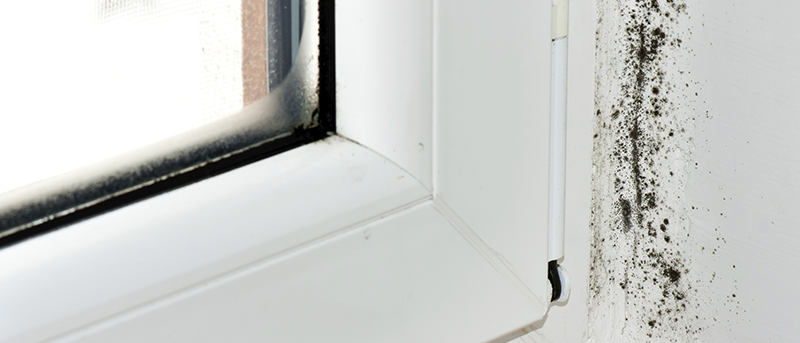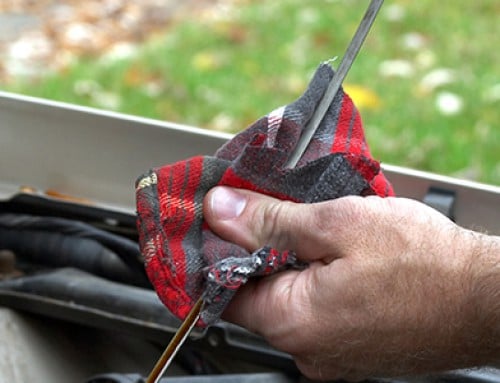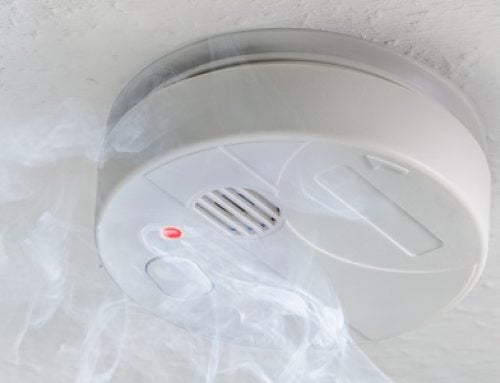Mould is a persistent organism that can thrive in environments with just a small amount of moisture. It can begin spreading within 24 hours under the right conditions, can adapt to a wide range of temperatures, and can grow on inorganic surfaces such as glass, tile, or steel, though it needs to feed off organic sources such as drywall, fabric, insulation, wood, or stucco. Mould can spread easily through ventilation systems and produces mycotoxins — poisonous, airborne substances that you, your employees, and customers can breathe in.
Simply put, mould can be a hazard to your commercial property, bottom line, and overall business. Thankfully, it can be identified, removed, and prevented. Here are some best practices for tackling mould on your business property:
How to identify mould
When looking for mould in your business property, here are some common mould growth symptoms that you should look out for:
- Stained ceiling tiles or walls
- Musty, earthy, or urine-type odors
- Black, brown, orange, pink, or green speckles around plumbing, grout, or tile
There are many different reasons why mould may begin to grow in your building, but some of the most common causes of mould include:
- A leaky roof
- Damages from a flood or hurricane
- Plumbing leaks at drains and gaskets
- Lack of ventilation in your building
- Faulty air conditioning, ventilation, or heating systems
- Cracked or disconnected kitchen appliance hoses
How to prevent mould growth
Once you have mould in your building, it can be extremely difficult and expensive to eradicate. Here are some steps you can take in order to help prevent mould growth:
- Make sure that your business property’s humidity level is always below 50 per cent
- Use an air conditioner or dehumidifier as needed
- Ensure that you ventilate properly with exhaust fans in kitchens (if applicable) and bathrooms
- Add mould inhibitors to any paints before application
- Clean any bathrooms using mould-killing products
- Use air purifiers if necessary
- Remove any carpets from bathrooms and basements
- Repair any leaky roofs, walls, and basements
- Remember to clean, disinfect, and dry everything after a sewer back-up or flooding
What to do if you have mould
Cleaning mould involves identifying and removing the sources of excess moisture, then using the simplest cleaning method to effectively remove mould growth. Here are some best practices for mould removal, broken down by size of the infected area:
Small areas
A healthy person can clean small areas by bagging and disposing of material with visible mould growth while wearing an approved N95 disposable respirator, gloves, and eye protection. As these materials are removed, check exposed areas for mould growth and clean as needed. Less-porous material like glass, plastic, concrete, or metal can be thoroughly cleaned using a strong detergent followed by lots of water.
Medium-sized areas
Clean these areas using the procedures above but make sure to contain the mould damaged areas with well-sealed plastic barriers and the regular use of a HEPA (High Efficiency Particulate Air) vacuum.
Large areas
If the mould growth has reached the stage where it covers a large surface area, it is recommended that you reach out to a professional mould clean-up contractor.
Protect yourself and your business with insurance
Unfortunately, you can’t always control what happens to your business. You can, however, control how prepared you are. Having the right protection in place can make a huge difference. To learn more about protecting yourself and your business, visit our Commercial Property Insurance page today!
This blog is provided for information only and is not a substitute for professional advice. We make no representations or warranties regarding the accuracy or completeness of the information and will not be responsible for any loss arising out of reliance on the information.






